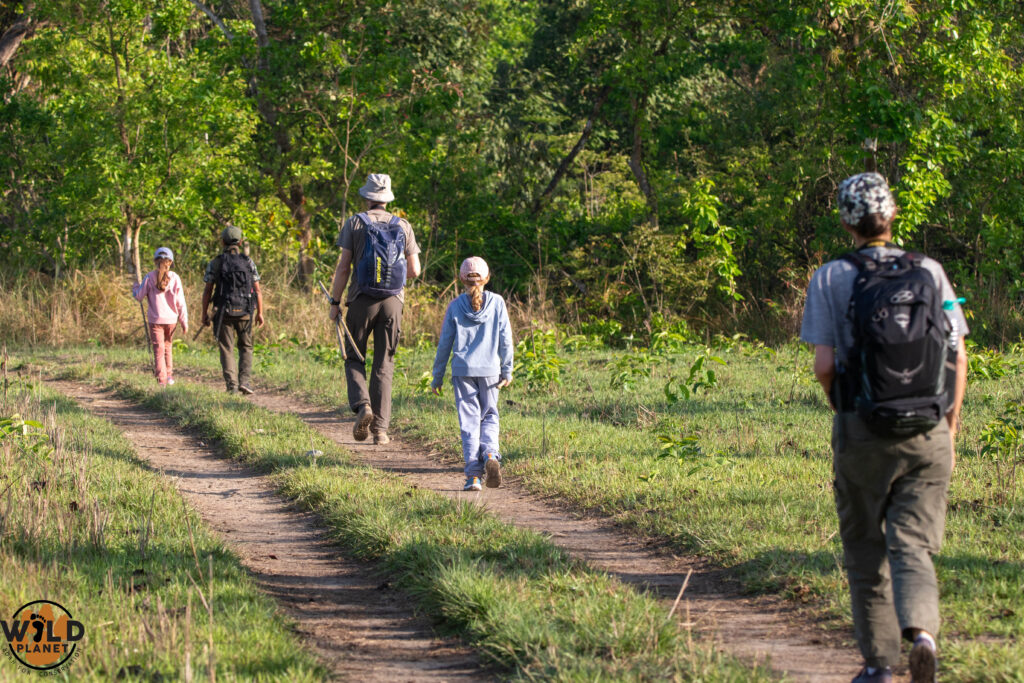When most people think of a safari, they picture bumping along dirt roads in a roaring jeep, scanning the trees for a flash of fur. It’s exciting, no doubt. But there’s another way — a deeper, more powerful way — to experience the wild: on foot.

A walking safari isn’t just a different safari. It’s a different world.
When you step into the jungle without the barrier of a vehicle, something changes. You are no longer a tourist. You are part of the landscape. Every sound sharpens, every scent carries a meaning. You hear the alarm call of a langur, the snap of a twig under a deer’s hoof, the low rumble of a distant tiger. These sounds are often drowned out by an engine on a jeep safari — but on foot, they surround you like a living language.
Encounters on a walking safari are different too.
Animals see jeeps every day. They tolerate them. But when they see a human on foot, it’s a meeting between equals. A respectful distance is maintained, and that’s how it should be. You don’t feel like a spectator; you feel the pulse of the wild, the unspoken agreement between you and the animal: I see you. You see me. We both belong here.
Another magic of walking is noticing the small things. A trail of ants crossing the path. Leopard tracks fresh in the mud. A tree scarred by a tusker. While jeeps zoom past in search of “big sightings,” walking safaris reveal the secret world that holds the jungle together.
And then there’s the feeling — that rush of pure, ancient adrenaline.
Every footstep matters. Every breath feels sharper. The jungle demands your attention and rewards it with moments of raw, breathtaking beauty. Walking safaris wake up something primal inside us, something modern life has almost silenced.
And there’s nowhere like Nepal for this experience.
In few places in the world — and especially in Nepal’s national parks — do you get the chance to walk on foot in tiger territory. You’re not just walking through any forest; you’re walking where one of the world’s biggest predators, the majestic Bengal tiger, silently rules.
Among these parks, Bardia National Park offers something even more special.
Here, it’s not mass tourism. It’s still wild, raw, real. Fewer crowds, bigger spaces, deeper jungles. Walking in Bardia isn’t just a safari — it’s a pure immersion into the untamed heart of the wild.
When you track a tiger on foot in Bardia, following fresh pugmarks through the misty forest, it’s not a show — it’s life unfolding. No fences, no guarantees — just you, your guide, and the real jungle.
Finally, walking safaris are kinder to nature. No noisy engines. No dust clouds. Just quiet steps and open hearts. It’s a lighter, more respectful way to meet the wild — the way it deserves to be met.
In the end, a jeep safari shows you the jungle.
But a walking safari makes you part of it.
If you want the real wild — the one that stirs your soul and humbles your spirit — leave the engine behind. Walk into the wild.
And if you’re ready for a truly unforgettable experience, walk the wild trails of Bardia.
You’ll never see the world the same way again.
